Guide to the Syrian rebels
- Published
The BBC's Lina Sinjab reports on the different warring factions in Syria
There are believed to be as many as 1,000 armed opposition groups in Syria, commanding an estimated 100,000 fighters.
Many of the groups are small and operate on a local level, but a number have emerged as powerful forces with affiliates across the country or formed alliances with other groups that share a similar agenda. Here we look at the most prominent.
MAIN REBEL COALITIONS
SUPREME MILITARY COUNCIL OF THE FREE SYRIAN ARMY
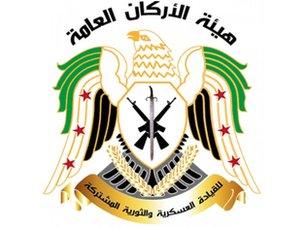
Leader: Brig Gen Salim Idris
The Free Syrian Army (FSA) was formed in August 2011 by army deserters based in Turkey, led by Col Riad al-Asaad. Its banner was soon adopted by armed groups that began appearing across the country. Despite this, the FSA's leaders had little or no operational control over what was happening on the ground in Syria. The opposition's Western and Gulf Arab backers sought to encourage a centralised rebel leadership and in December 2012 a number of brigades affiliated themselves to a newly-created Supreme Military Council (SMC). The SMC's chief-of-staff, Gen Idris, wants it to be a more moderate and stronger alternative to the jihadist rebel groups in Syria.
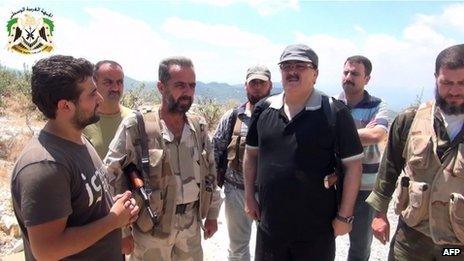
The SMC has 30 members, six representing each of five "fronts" in Syria - Northern (Aleppo and Idlib), Eastern (Raqqa, Deir al-Zour and Hassaka), Western (Hama, Latakia and Tartus), Central (Homs and Rastan) and Southern (Damascus, Deraa and Suwaida). Each front has a civilian-military council and a commander. The opposition National Coalition describes Gen Idris as the commander of the FSA, however observers have said the FSA is simply a loose network of brigades rather than a unified fighting force. Brigades supposedly report through the chain of command to Gen Idris, but he is yet to assert operational control and serves more as a spokesman and conduit for foreign funding and arms shipments. SMC-aligned brigades retain separate identities, agendas and commands. Some work with hardline Islamist groups that alarm the West, such as Ahrar al-Sham, and al-Qaeda-linked jihadists.
SMC AFFILIATES
Martyrs of Syria Brigades
Leader: Jamal Maarouf
Estimated number of fighters: 7,000
Originally called the Martyrs of Jabal al-Zawiya Brigade, the group was formed in late 2011 in Idlib province. Although its name was changed in mid-2012 to the Martyrs of Syria Brigades to reflect the growing ambitions of its leader, its operations are still focused in north-western Syria. Unlike Suqour al-Sham (see below), which also hails from Jabal al-Zawiya and wants an Islamic state, the Martyrs of Syria Brigades reportedly ascribe to no particular ideology.
Northern Storm Brigade
The Northern Storm Brigade is an Islamist FSA unit that controls an important border crossing between Syria and Turkey. In September 2013, there were deadly clashes between the Northern Storm Brigade and the Islamic State of Iraq and the Levant (ISIS) after the jihadist group stormed the town of Azaz.
Ahrar Souriya Brigade
The Ahrar Souriya (Free Men of Syria) Brigade, which operates under the SMC, was set up by Col Qassem Saad al-Din, a former air force pilot from the northern town of Rastan.

ISLAMIC FRONT

Leader of Shura Council: Ahmed al-Sheikh (Suqour al-Sham)
Deputy leader of Shura Council: Abu Omar Hureitan (Liwa al-Tawhid)
General secretary: Sheikh Abu Rateb (Liwa al-Haqq)
Head of military office: Zahran Alloush (Jaysh al-Islam)
Head of political office: Hassan Abboud (Ahrar al-Sham)
Head of Sharia office: Abu al-Abbas al-Shami (Ahrar al-Sham)
Estimated number of fighters: 45,000
In November 2013, seven Islamist groups - Harakat Ahrar al-Sham al-Islamiyya, Jaysh al-Islam, Suqour al-Sham, Liwa al-Tawhid, Liwa al-Haqq, Ansar al-Sham and the Kurdish Islamic Front - declared that they were forming the largest rebel alliance yet in the 33-month conflict, with an estimated 45,000 fighters. They said the new Islamic Front was an "independent political, military and social formation" that aimed to "topple the Assad regime completely and build an Islamic state". They outlined a new command structure, with key roles shared between the seven groups, and said they would work towards a "gradual merger".
The announcement led to the dissolution of the Syrian Islamic Front (SIF), which was dominated by Ahrar al-Sham, and the effective break-up of the SMC-aligned Syrian Islamic Liberation Front (SILF). Analysts predicted that the move would undermine the SMC, and in December 2013 the front announced that it had withdrawn from the SMC's command. Days later, its fighters drove out SMC-aligned forces out of their headquarters and warehouses at the Bab al-Hawa border crossing with Turkey, prompting the US and UK to suspend "non-lethal" assistance for rebel groups in northern Syria.
The Islamic Front does not include al-Qaeda affiliates like the Islamic State of Iraq and the Levant (ISIS) and the al-Nusra Front, but its charter welcomes foreign fighters, as "brothers who supported us in jihad", suggesting it is willing to co-operate with them.
Harakat Ahrar al-Sham al-Islamiyya
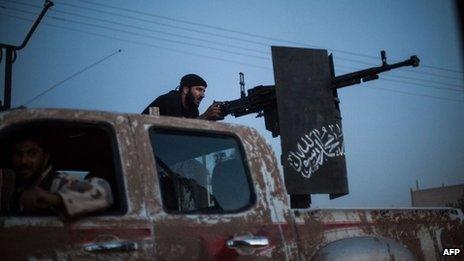
Leader: Hassan Abboud
Estimated number of fighters: 10,000 to 20,000
The Harakat Ahrar al-Sham al-Islamiyya (Islamic Movement of the Free Men of the Levant) is a Salafist group that first emerged in the north-western province of Idlib in late 2011 as Ahrar al-Sham and has since made a major impact on the battlefield. In December 2012, it formed the Syrian Islamic Front (SIF) with 10 other hardline Islamist groups, including Liwa al-Haqq. Ahrar al-Sham later merged with three of them to form Harakat Ahrar al-Sham al-Islamiyya. Its leader is Hassan Abboud, also known as Abu Abdullah al-Hamawi, who was imprisoned by the Syrian authorities after taking part in the insurgency in neighbouring Iraq but released in early 2011 as part of an amnesty.
Before its dissolution in November 2013, the SIF became the most powerful rebel force battling the government, operating all over the country. It remained independent and refused to come under the umbrella of the SMC, but co-operated with SMC-aligned brigades on the battlefield, as well as al-Qaeda affiliates.
Harakat Ahrar al-Sham's fighters are renowned for their discipline and ability. They were some of the first to use improvised explosive devices and to target military bases to capture weapons. The group operates a "technical division" that carries out cyber-attacks and a "relief office" that runs social services and carries out public works.
Jaysh al-Islam
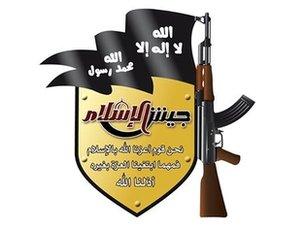
Leader: Zahran Alloush
Estimated number of fighters: 9,000+
Jaysh al-Islam (Army of Islam) was formed by some 50 Islamist factions operating in and around Damascus in September 2013. Zahran Alloush, a former imprisoned Salafist activist whose group Liwa al-Islam (Battalion of Islam) is the most prominent and powerful member of the alliance, said it had been formed to "achieve unity among the units of the mujahideen and avoid the effects produced by the divisions within the National Coalition". More than 30 of the brigades in Jaysh al-Islam were already operating under the banner of Liwa al-Islam. The others include Liwa Fath al-Sham, Liwa Tawhid al-Islam and Liwa al-Ansar. Jaysh al-Islam's formation was believed to have been an attempt by Saudi Arabia to counter the expanding presence of al-Qaeda affiliates around the Syrian capital, with Salafist groups being offered arms and money in return for loyalty. Zahran Alloush's father is a religious scholar based in the Gulf Kingdom. Liwa al-Islam, which was founded in mid-2011, is the leading rebel group in the Ghouta agricultural belt around Damascus and is well-armed. The group rose to prominence after claiming it was behind the bombing of the National Security Bureau's headquarters in Damascus in July 2012, which killed several senior security officials including the defence minister and President Assad's brother-in-law.
Suqour al-Sham

Ahmed al-Sheikh is leader of the Islamic Front
Leader: Ahmed al-Sheikh
Claimed number of fighters: 9,000 to 10,000
Suqour al-Sham (Falcons of Syria) was formed in the Jabal al-Zawiya region of the north-western province of Idlib in September 2011. It has since grown in size and influence - drawing in several local factions, including the Daoud Brigades - and expanded its operations into Aleppo and Damascus provinces. Ahmed al-Sheikh, also known as Abu Issa, was the driving force behind the establishment in September 2012 of the SILF and was named its leader. Suqour al-Sham nevertheless said its fighters would not take instruction from an outside leadership and in late 2013 it joined the Islamic Front. Abu Issa, who has previously called for a moderate Islamic state that is not imposed on society, was named head of the new alliance.
Liwa al-Tawhid
Leader: Abdul Aziz Salama
Estimated number of fighters: Between 8,000 and 10,000
Liwa al-Tawhid (Battalion of Monotheism) was formed in July 2012 to unite the many separate fighting groups operating in the northern Aleppo countryside. It took control of part of the city of Aleppo after leading a rebel offensive that month. Liwa al-Tawhid is now one of the main forces operating in the province. The relatively moderate Islamist group, which calls for an Islamic state that is governed by civilians and protects minorities, joined the SMC-aligned SILF in January 2013. However, it maintained good relations with hardline groups such as Harakat Ahrar al-Sham and the al-Nusra Front. In September 2013, it was called in to broker an end to clashes between ISIS and an SMC-aligned brigade in the northern town of Azaz. Later that month, Abdul Aziz Salama, then Liwa al-Tawhid's political leader, read out a statement by 11 rebel groups, including al-Nusra, declaring that they did not recognise the National Coalition and calling for the opposition to unite under an "Islamic framework". Its late military leader Abdul Qadir al-Saleh, a former businessman known as "Hajji Marea", praised al-Nusra before he was killed in a government air strike in November 2013. After his death, Mr Salama, also known as "Hajji Anadan", assumed overall command of Liwa al-Tawhid and the following week the group joined the newly formed Islamic Front. In addition to its military operations, Liwa al-Tawhid has medical and media "foundations" and claims to have thousands of civilian "administrators" helping run areas under rebel control.
Liwa al-Haqq
Liwa al-Haqq (Battalion of Truth) was formed in 2012 by Liwa al-Ansar and other Islamist brigades fighting in and around the central city of Homs. Led by a former Syrian army paratrooper, it is one of the most prominent groups in Homs and the surrounding province. Liwa al-Haqq is dominated by hardline Islamists and helped form the now-dissolved SIF alliance with Ahrar al-Sham.
Kataib Ansar al-Sham
Kataib Ansar al-Sham (Supporters of the Levant Brigades) is mainly active in the northern provinces of Latakia and Idlib. The group was a founding member of the SIF.
Kurdish Islamic Front
The Kurdish Islamic Front is a Salafist group that came to prominence only recently when it fought alongside Harakat Ahrar al-Sham and ISIS against the Popular Protection Units (YPG), the Kurdish militia force set up by the Democratic Unity Party (PYD) to provide security in the de facto autonomous Kurdish zone in north-eastern Syria. The KIF reportedly runs a number of Islamic schools for Kurdish children in Aleppo and elsewhere.

SYRIAN ISLAMIC LIBERATION FRONT (SILF)

The Syrian Islamic Liberation Front (SILF) is a loose alliance formed in September 2012 by about 20 rebel groups, including the Farouq Brigades, the Islamic Farouq Brigades, Liwa al-Tawhid, Liwa al-Fath, Liwa al-Islam, Suqour al-Sham, and the Deir al-Zour Revolutionaries' Council. Most of the groups, which ranged from moderate Islamist to ultraconservative Salafist in outlook, recognised the SMC and made up the bulk of its fighting force. In November 2013, Liwa al-Tawhid and Suqour al-Sham declared that they were joining the new Islamic Front, significantly reducing the SILF's military strength and raising questions about whether it would be disbanded. It is not clear if the remaining members of the SILF will continue to fight under its banner or join the Islamic Front.
INDEPENDENT GROUPS
Ahfad al-Rasoul Brigades
Leaders: Abu Osama al-Julani, Mohammed al-Ali and Maher al-Nuami
Estimated number of fighters: Between 7,000 and 9,000
The Ahfad al-Rasoul (Grandsons of the Prophet) Brigades are an alliance of more than 40 moderate Islamist groups formed in 2012. They operate across Syria, although their presence is strongest in the northern province of Idlib. The alliance is independent but aligned to the SMC, and has also been linked to Qatar and Western intelligence agencies. In August 2013, its fighters were forced from the northern town of Raqqa by ISIS.
Asala wa al-Tanmiya Front
Claimed manpower: 13,000 fighters and civilian personnel
The Asala wa al-Tanmiya (Authenticity and Growth) Front is a moderate Islamist alliance formed in November 2012. Its fighters are organised across five "fronts" covering most of Syria, but their presence is strongest in Aleppo, where the Nour al-Din al-Zinki Brigades operate, and in the tribal areas of the eastern province of Deir al-Zour, the power base of the Ahl al-Athar Brigade.
Durou al-Thawra Commission
The Durou al-Thawra (Revolution's Shields) Commission is an SMC-linked alliance of a few dozen small armed factions, most of them in Idlib and Hama provinces. It was set up in 2012 with the help of the Syrian Muslim Brotherhood. It describes itself as a moderate Islamic-democratic alliance. It acknowledges receiving support from the Brotherhood, but denies any direct link to it.
Tajammu Ansar al-Islam
Tajammu Ansar al-Islam (Gathering of the Supporters of Islam) was formed in mid-2012 by seven Damascus-based Islamist groups. However, it has since suffered several splits.
Yarmouk Martyrs' Brigade
The Yarmouk Martyrs' Brigade is a moderate Islamist group linked to the SMC that was formed in the southern province of Deraa in August 2012 through the merger of eight small units. Led by Bashar al-Zoubi, it operates mainly near Syria's borders with Jordan and the Israeli-occupied Golan Heights, where in March and May 2013 fighters briefly detained UN peacekeepers patrolling the demilitarised area.
National Unity Brigades
Estimated number of fighters: 2,000
The National Unity Brigades (Kataib al-Wihda al-Wataniya) were created in August 2012. They claim to have several units located in almost all of Syria's provinces and to operate "for the sake of a civil, democratic state for all ethnicities and social identities". The NUB operates mainly in the Jisr al-Shughour region of Idlib province and south of Damascus, but also in Jabal al-Zawiya, Deraa and Deir al-Zour. Some fighters are reported to be from the minority Alawite and Ismaili sects.
JIHADIST GROUPS
Al-Nusra Front
Leader: Abu Mohammed al-Julani
Estimated number of fighters: 5,000 to 7,000
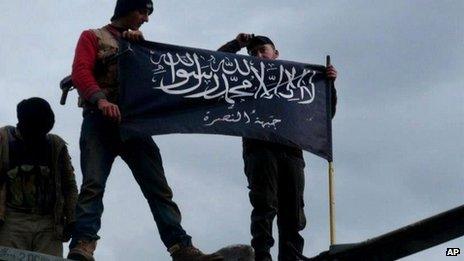
The Nusra (Support) Front for the People of the Levant, is a jihadist group believed to have been created in mid-2011 with the help of the Islamic State of Iraq (ISI), a militant umbrella group that includes al-Qaeda in Iraq (AQI). It declared its existence in January 2012 and has since emerged as one of the most effective rebel forces. Its fighters are active in 11 of Syria's 14 provinces, particularly Idlib, Aleppo and Deir al-Zour. Initially, the group was blamed for dozens of suicide bombings in major city centres, killing many civilians. Later, its disciplined and well-armed fighters began to take part in regular rebel operations, then major offensives. Today, they control territory in northern Syria. The US designated al-Nusra a terrorist entity in December 2012, saying it was an "alias" of AQI. In April 2013, the head of the ISI, Abu Bakr al-Baghdadi, announced the merger of his group and al-Nusra, creating the Islamic State in Iraq and the Levant (ISIS). However, al-Nusra's leader Abu Mohammed al-Julani - another former insurgent in Iraq released in 2011 by the Syrian government - swiftly rejected the move and asserted his allegiance to al-Qaeda's overall leader, Ayman al-Zawahiri. Since then, al-Nusra and ISIS have operated as separate entities, with large numbers of foreign fighters joining the latter. Like Ahrar al-Sham, al-Nusra has sought to build popular support by providing social services and carrying out public works.
Islamic State of Iraq and the Levant (Isis)
Leader: Abu Bakr al-Baghdadi
Estimated number of fighters: 3,000 to 5,000
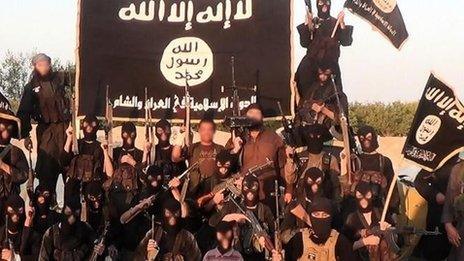
The creation of the Islamic State of Iraq and the Levant in April 2013 was rejected by the al-Nusra Front. ISI's leader, Abu Bakr al-Baghdadi, known as Abu Dua, nevertheless pressed ahead with expanding its operations into Syria. In August 2013, US intelligence assessed that he was based in Syria and commanded as many 5,000 fighters, many of them foreign jihadists. The group is active mostly in northern and eastern provinces of Syria. It has assumed joint control of municipalities in Aleppo, Idlib and Raqqa provinces. Isis has taken part in a number of major rebel operations, including by carrying out suicide bombings that helped capture two military bases. But it has also had tense relationships with other rebel groups, including those considered Islamist. Its fighters reportedly recently killed a prominent member Ahrar al-Sham, and have clashed with those from Ahfad al-Rasoul in Raqqa and the Northern Storm Brigade in Azaz. They have also targeted Shia and Alawite civilians.
Jaysh al-Muhajirin wa al-Ansar
Jaysh al-Muhajirin wa al-Ansar (Army of the Emigrants and Helpers) is a group comprising hundreds of mostly foreign fighters, many of them from the North Caucasus, that was formed in March 2013 by several jihadist units. The group, which seeks to establish an Islamic state in Syria, operates mostly in Aleppo province, but says it is also fighting in Hama and Latakia. It is led by a Chechen jihadist called Omar al-Shishani, who has aligned himself with ISIS.
KURDISH GROUPS
Popular Protection Units (YPG)
Political leader: Salih Muslim (PYD)
Claimed number of fighters: 10,000 to 15,000
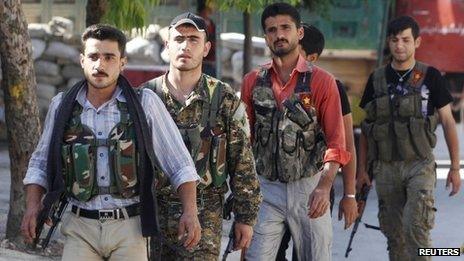
The Popular Protection Units is the armed wing of the Kurdish political party, the Democratic Unity Party (PYD), an affiliate of the Kurdistan Workers' Party (PKK) that runs the de facto autonomous Kurdish zone in north-eastern Syria. The YPG emerged as a force in the summer of 2012 when the Syrian army withdrew from Kurdish areas and it sought to provide security. The PYD has tried to keep the Kurds out of the conflict and consolidate its territorial gains. However, there has been occasional fighting with government troops, and since November 2012 also deadly clashes between the YPG and rebel fighters - particularly those from Islamist and jihadist brigades - over control of several border towns and parts of the city of Aleppo. The Syrian rebels and the Turkish government have accused the Kurdish group of acting as an Assad proxy.
Sources: IHS Jane's, external, CTC Sentinel, external, Institute for the Study of War, external, Carnegie Endowment, external